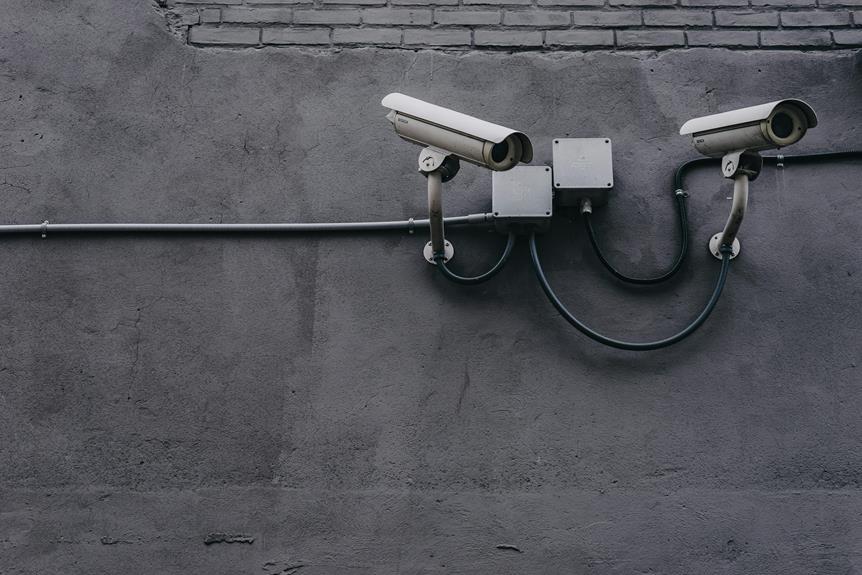You’re tasked with securing classifieds data effectively. From encryption to access controls, each step plays a crucial role in fortifying your data against potential breaches. These security measures in classifieds data capture form a robust defense, but there’s more to uncover. Stay tuned to discover how each layer contributes to the overall protection of your valuable classifieds data.
Data Encryption Techniques
Data encryption techniques play a crucial role in safeguarding classifieds data capture. To ensure secure data transmission, effective encryption key management is essential. Encryption keys are the foundation of encryption algorithms, used to encode and decode data. Proper key management involves securely generating, storing, distributing, and revoking encryption keys. Without robust key management practices, encrypted data could be vulnerable to unauthorized access.
Secure data transmission relies on encryption to protect information as it travels between systems. Using encryption algorithms, data is transformed into a ciphertext that can only be deciphered with the corresponding decryption key. This process ensures that even if intercepted, the data remains unintelligible to unauthorized parties. Implementing strong encryption protocols and regularly updating encryption keys are critical steps in maintaining data security during transmission.
Secure Storage Options
When considering secure storage options for classifieds data capture, it is essential to focus on data encryption methods and access control policies. By implementing robust data encryption techniques, you can safeguard sensitive information from unauthorized access or breaches. Additionally, enforcing stringent access control policies ensures that only authorized personnel can retrieve or modify the stored data, enhancing overall security measures.
Data Encryption Methods
To enhance the security of classifieds data capture, implementing robust data encryption methods is imperative. Encryption standards play a crucial role in safeguarding sensitive information during storage and transmission. Utilizing advanced encryption algorithms like AES (Advanced Encryption Standard) or RSA (Rivest-Shamir-Adleman) ensures that data is protected from unauthorized access. These encryption methods convert plaintext data into ciphertext, making it unreadable without the proper decryption key.
Data protection is further strengthened by incorporating secure key management practices. This involves securely storing encryption keys separately from the encrypted data, limiting access to authorized personnel only. Additionally, implementing data encryption at rest and in transit adds multiple layers of security to classifieds data capture systems.
Access Control Policies
Implementing Access Control Policies is essential for ensuring the secure storage of classifieds data. By defining role-based permissions, organizations can control who has access to what data within the classifieds database. Role-based permissions restrict users to only the information necessary for their specific job functions, reducing the risk of unauthorized access.
User authentication plays a crucial role in verifying the identity of individuals accessing the classifieds data. Implementing strong authentication methods such as multi-factor authentication ensures that only authorized users can gain entry. By requiring users to provide multiple forms of verification, such as passwords and biometric scans, the likelihood of unauthorized access is significantly reduced.
Organizations should regularly review and update access control policies to adapt to changing security threats. By staying proactive and vigilant, companies can maintain the confidentiality and integrity of their classifieds data. Implementing robust access control policies with role-based permissions and user authentication mechanisms is crucial in safeguarding sensitive information from unauthorized access.
Privacy Policy Enforcement
Enforcing privacy policies is a critical aspect of maintaining security in classifieds data capture. Privacy policy enforcement involves ensuring that data retention policies, privacy controls, privacy compliance, and data protection measures are strictly adhered to throughout the data capture process. By enforcing these policies, organizations can safeguard sensitive information and prevent unauthorized access or misuse of classifieds data.
To uphold privacy policies effectively, it is essential to implement robust privacy controls that restrict access to classifieds data based on user roles and permissions. Organizations must also conduct regular audits to ensure privacy compliance and identify any potential vulnerabilities in the data capture system. Additionally, encrypting sensitive data and implementing secure authentication mechanisms are crucial steps in maintaining data protection.
Secure Data Extraction Methods
As you focus on maintaining security in classifieds data capture, the next critical aspect to address is the implementation of secure data extraction methods. To safeguard sensitive information during extraction processes, utilizing data masking strategies is paramount. Data masking involves replacing original data with fictitious but realistic data, ensuring that the extracted information remains confidential.
Additionally, secure transmission protocols play a vital role in protecting data integrity during extraction. By employing encryption techniques and secure channels, such as HTTPS or SFTP, you can prevent unauthorized access or interception of classifieds data while it is being extracted and transferred to designated destinations. These protocols establish a secure communication pathway, safeguarding the data from potential breaches.
Data Classification Protocols
To establish a robust framework for safeguarding classifieds data, the adoption of data classification protocols is essential. User authentication plays a pivotal role in ensuring that only authorized personnel have access to sensitive information. By implementing stringent user authentication measures such as multi-factor authentication and role-based access control, organizations can mitigate the risk of unauthorized data breaches.
Data masking is another key component of data classification protocols. This technique involves obscuring specific data elements to protect sensitive information while still allowing for legitimate data processing. By masking confidential details such as personally identifiable information (PII) or financial data, organizations can prevent unauthorized access to classifieds data.
Incorporating user authentication and data masking into data classification protocols enhances data security by limiting access to classified information and safeguarding it from potential threats. By adhering to these protocols, organizations can maintain the integrity and confidentiality of their classifieds data.
Data Analysis Security Measures
When analyzing classifieds data, it is crucial to implement robust security measures to protect the integrity and confidentiality of the information. Data breach prevention and threat detection are paramount in ensuring the security of classifieds data during the analysis phase.
To enhance data breach prevention, employ encryption techniques to secure data transmission. Encryption scrambles data, making it unreadable to unauthorized parties. Additionally, utilize network security measures such as firewalls and intrusion detection systems to safeguard against external threats attempting to access sensitive data.
Threat detection mechanisms play a vital role in identifying and mitigating potential risks during data analysis. Implementing advanced analytics tools that can detect anomalies and suspicious activities in real-time is essential for maintaining a secure environment for classifieds data processing.
Privacy-Focused Capture Techniques
When considering privacy-focused capture techniques, ensuring anonymity in data collection is crucial. By utilizing encryption methods, sensitive data can be securely transmitted and stored, safeguarding individuals’ privacy. Implementing these practices not only protects personal information but also upholds data integrity within classifieds data capture processes.
Anonymity in Data Collection
For data collection within classifieds, ensuring anonymity is paramount to protect user privacy. When implementing privacy-focused capture techniques, two key factors to consider are data retention and user authentication. Data retention policies should be established to outline the duration for which classifieds data will be stored. By limiting the retention period, the risk of exposing sensitive user information is minimized. Additionally, robust user authentication measures must be in place to verify the identity of individuals interacting with the classifieds platform. This can include multi-factor authentication methods, such as SMS codes or biometric verification, to ensure that only authorized users can access and contribute to the data being collected. Anonymity in data collection is further enhanced by implementing stringent access controls and regularly auditing user activities to detect any unauthorized access attempts. By prioritizing anonymity through these measures, classifieds platforms can build trust with users and safeguard their privacy effectively.
Encryption for Privacy
To enhance privacy and security in classifieds data capture, encryption plays a crucial role in safeguarding sensitive information from unauthorized access. Secure communication is vital in preventing data breaches during the capture process. By encrypting data, you are converting it into a code that can only be deciphered with the correct decryption key, ensuring that even if intercepted, the information remains secure. This process is essential for protecting personal details, contact information, and any other confidential data collected through classifieds.
Data masking is another technique that contributes to privacy protection. It involves hiding specific data points within a dataset, such as personally identifiable information, by replacing them with anonymous placeholders. This way, even within secure communication channels, the actual sensitive data remains hidden from view, reducing the risk of exposure.
Incorporating encryption and data masking into your classifieds data capture procedures establishes a robust privacy framework, ensuring that confidential information is shielded from potential threats throughout the capture process.
Authentication and Access Controls
Through stringent authentication and access controls, the security measures in classifieds data capture are bolstered to fortify the defense against unauthorized access and potential breaches. Implementing multi-factor authentication (MFA) ensures that individuals seeking access must provide two or more forms of verification before entry is granted. This added layer of security significantly reduces the risk of unauthorized users gaining entry to the system.
Role-based access further enhances security by restricting individuals to only the information and functions necessary for their specific roles within the organization. By assigning access permissions based on job responsibilities, the potential impact of a security breach is minimized, as individuals are limited to the data essential for their tasks.
Incorporating MFA and role-based access controls into the classifieds data capture system creates a robust security framework that mitigates risks and safeguards sensitive information. These measures not only protect data integrity but also instill confidence in users regarding the security of the platform.
Regular Security Audits and Updates
By maintaining a proactive approach to security, regular security audits and updates play a critical role in ensuring the ongoing resilience of classifieds data capture systems. Conducting these audits helps in identifying vulnerabilities and implementing necessary patches to enhance network security and prevent data breaches effectively.
Here are four key reasons why regular security audits and updates are paramount for classifieds data capture systems:
- Identification of Weak Points: Regular audits help in pinpointing weak spots in the system that could potentially be exploited by cyber attackers.
- Ensuring Compliance: Through consistent updates, you ensure that your systems meet the latest security standards and regulations, reducing the risk of non-compliance.
- Staying Ahead of Threats: By keeping software and security measures up to date, you stay ahead of evolving cyber threats that could compromise your classifieds data.
- Enhancing Incident Response: Regular audits improve your incident response capabilities, enabling you to react promptly in case of a security breach, thereby minimizing the impact on your classifieds data capture systems.
Frequently Asked Questions
How Can I Ensure the Physical Security of Classifieds Data Storage?
To ensure physical security of classifieds data storage, control access by restricting entry to authorized personnel only. Implement surveillance cameras strategically to monitor storage areas. These measures enhance data protection and minimize unauthorized access risks effectively.
Are There Measures in Place to Prevent Insider Threats to the Data?
When safeguarding data from insider threats, encryption plays a vital role. Implement robust access controls, monitor data access diligently, and regularly audit user activities to detect anomalies. These measures fortify your defense against unauthorized data breaches.
What Steps Are Taken to Secure Data During Transmission Processes?
You ensure data security during transmission by implementing strong encryption protocols. Your network is secured using advanced technologies to protect classified information. These measures safeguard data integrity and confidentiality in all communication processes.
How Is Data Integrity Maintained in the Classifieds Data Capture Process?
In the intricate dance of classifieds data capture, data integrity pirouettes with finesse. Through the art of data encryption and the precision of access control, a harmonious symphony of security measures safeguards the sanctity of information.
What Protocols Are in Place for Handling Data Breaches or Security Incidents?
In the event of a breach, robust incident response protocols ensure prompt action. Encryption and access control measures bolster breach prevention efforts. Quick identification and containment of security incidents are key to minimizing potential damage.




